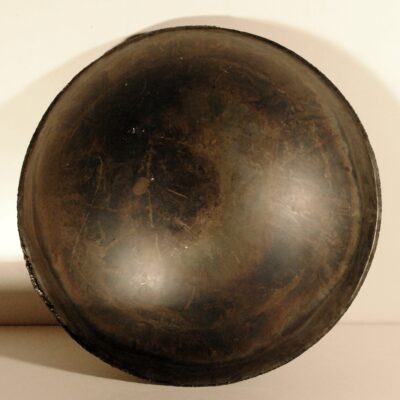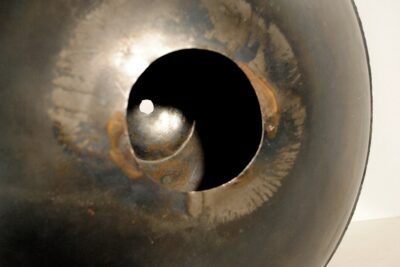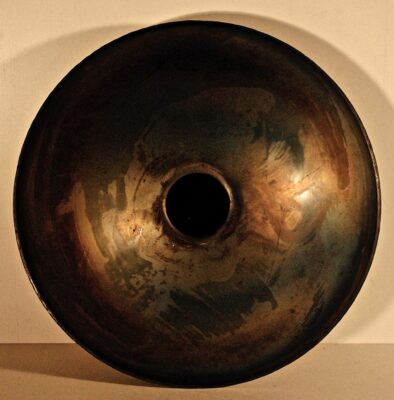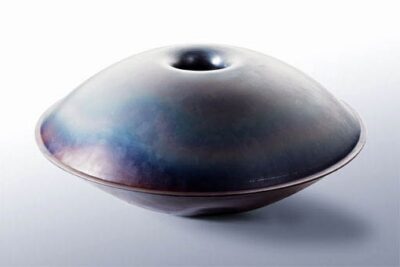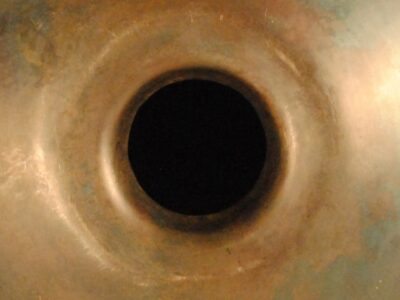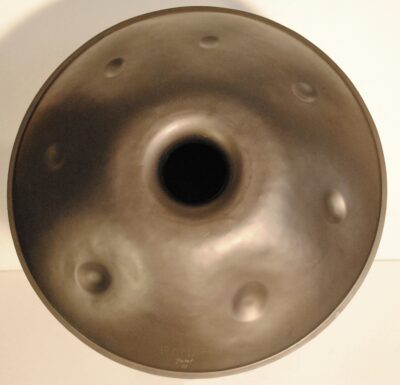From the Hang to the Gubal
Categories: Blog, Articles, History Author: PANArt 7th March 2014
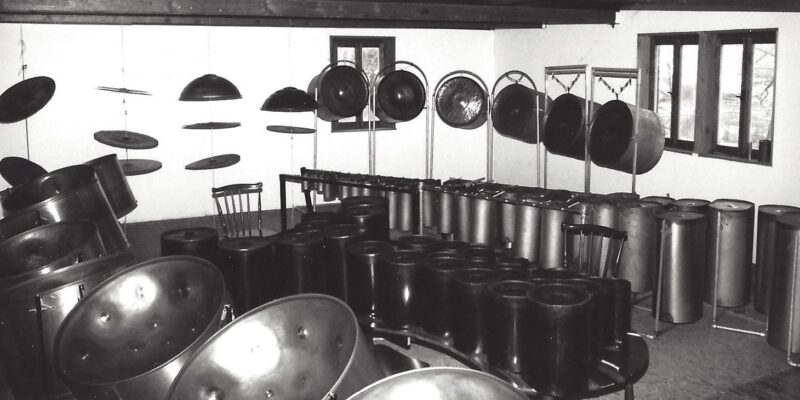
If you would like to get to know the musical instrument Gubal®, we suggest you read this article. Here you can find out what this instrument is about.
In November 1999, the Ghatam, a musical instrument from Southern India, encountered the family of Pang instruments from PANArt: the result was a new kind of instrument with a delightful Pang sound. Our raw material called Pang is produced by a patented process developed by PANArt.
The elastic, cylindrical and metallic resonance body of the steelpan blended with the stiff, domed clay vessel of the Ghatam.
At first the tuners of PANArt called this hybrid instrument Ghatpang, but soon realized that this was really something entirely new. This new thing was called Hang® (Bernese dialect for “hand”) because this highly sensitive receptacle had to be played by hand in order to create the entire range of its magic appeal.
Initially we tried to embed and amplify the deep sound of air vibration in the cavity of the vessel into the new instrument. When even the assistance of renowned acoustic scientists was of no avail, we soon gave up these experiments.
An appealing structure now took the place of the opening in the vessel: the Ding. The resulting gong-like sound similar to “ding!” was placed in the center of the upper shell, from now on called the Ding side.
To carry the oscillations from inside the receptacle outwards, the opening was retained and found its place on the lower half shell of the instrument. The faint, deep bass sound generated at the opening was called the Gu. Now the Hang® had its Gu side.
This was the Hang® that we presented to the general public in 2001. It resonated with individuals all over the world. Thanks to globalization, the magic sound was quickly carried in all directions.
As faint as the deep Gu sound of the Hang® was, it remained a challenge to us. We wanted to intensify it.
That's how we created the Gudu Hang in 2004. There was a second opening on the underside. A wooden tube, the Dum, inserted into the Gu opening lowered the bass sound by a quint; however, its shortcoming remained.
In order to provide the instrument with a richer and fuller sound and to bring it even closer to the player, we tuned deeper sounds in the tone circle which we called chorus. In a new generation of the Hang® in 2006, the Ding was now tuned to D3, an entire quint lower than in the first instruments.
Furthermore, from 2007 on, the neck of the Gu was tuned to D5 in harmony with the Ding, and supplemented with two other partial tones F5 and F#5. When stimulating the rim of the neck, a bright, oscillating Guing resounds. No one anticipated that this was a step towards the Gubal®.
With the Integral Hang (2008) and the Free Integral Hang (2010), the sound sculpture was melded even more into a whole. When handing over these instruments to the purchasers the function of the Gu was explained in-depth. By opening and closing his thighs, a player could influence the tone pitch of the Gu. Played in the proper posture, the Gu produces a D2 uniting Ding and Gu into an entity. Playing the Integral Hang® means uniting opposites: heaven and earth, highs and lows, Ding and Gu.
Playing the Hang® upright on the lap was another way to allow the integration of Ding and Gu.
In 2013 we managed to tune the neck of the Gu low enough, so that the air inside could be stimulated sufficiently to produce a voluminous bass sound. The Ringding was born and the Gu opening traveled back to the upper side of the instrument.
Now there was enough space on the lower side for the Gugel, a hemispherical extension of the vessel. Three liters more volume allowed a strong 78 Hertz bass sound (Eb2). Its tone pitch can be further lowered with the hand.
In a development process lasting for 14 years, a new sound sculpture matured. We called it Gubal®.
Hermann Helmholtz, renowned acoustician, created spherical resonators with necks for analyzing sounds and tuning instruments 150 years ago. The physical mechanism is named after him Helmholtz resonance. Today it is used to damp undesirable low frequency sounds in rooms.
Helmholtz would surely take pride that the tuners at PANArt have extended the mechanism for musical purposes. The neck of the receptacle became elastic – essential for getting the air to oscillate efficiently. In addition, the Ringding is tuned harmonically to Eb3, Bb3 and Eb4. Playing the Gubal® means to integrate these sounds with the Helmholtz resonator: the Gu and the Ringding are combined into the Gung. For the chorus of the Gubal® we chose the notes Bb3, C4, Db4, Eb4, F4, G4 and Bb4.
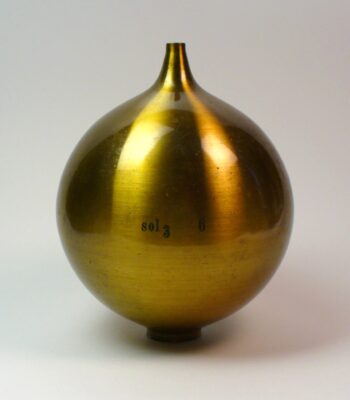
Playing the Gubal® sound sculpture means devotion to the groove, it means serving music, playing with the most delicate articulation and powerful energy. The range of such playing demands performers with music in their guts who are capable of conducting this small orchestra on their lap. It calls for utmost presence. Please take into consideration that – unlike our older sound sculpture Hang® – the musical instrument Gubal® is not a generous invitation to any and every one. The Hang® centered the player and required no playing technique. The Gubal®, on the other hand, challenges you to bring the music up from the depth of your body.
Severin Berz (www.severinberz.ch) is a Hang® player from the very beginning. In his report he meets the essential points:
My first experiences with the Gubal
First of all: The beginning was quite difficult. I became aware that I was trying too hard to play the Gubal like a Hang. I couldn't get it to resonate and sound the way I had imagined.
After a certain period of time, something changed. This happened because I began to approach the Gubal more physically. I already did that with the Hang, but it couldn't transpose the energy. I had to transform and reduce this energy, just like an electrical transformer does.
The Gubal, on the other hand, responds and expresses what I transmit. There is such a large range between the bass and high sounds that the limitation lies with me. The Gubal is able to lead me from the utmost tranquility to a constant rhythmical power, from slowness to speed without losing intensity and precision.
This immediate transmission and direct transfer of energy into sound makes it much more challenging to play, because it is a true expression of what I transmit. It is not easy at all to play the Gubal. Hesitant play or improper stimulation is exposed immediately. But especially the loss of resonance is directly perceptible when the balance between silence and sound is not respected.
The Gubal is an instrument which has to be played in an integral way, you have to live it! Because it follows the player immediately wherever he goes – be it into harmony, beauty, virtuosity, into the powerful or the subtlety, but also into the chaos, dissonance or haste, thanks to the contrast of the basses and the precise and clear resonances.
I found out that we have to rediscover slowness and give silence a place to follow the bass and the sound. That's what it's all about: to give room for swinging. When playing the Hang, I made music with the order of sounds; in playing the Gubal, I make music around the center – here called silence.
Felix is right when he says that the Gubal is like an orchestra under our hands and fingers. The Gubal offers an extraordinary wide spectrum of sounds – and in all directions, from bass to high sounds.
Severin Berz, November 2013
We recommend a look at the videos on our website and reading the book Hang – Sound Sculpture. On www.hangblog.org you can learn more about the previous history of the Gubal®.



